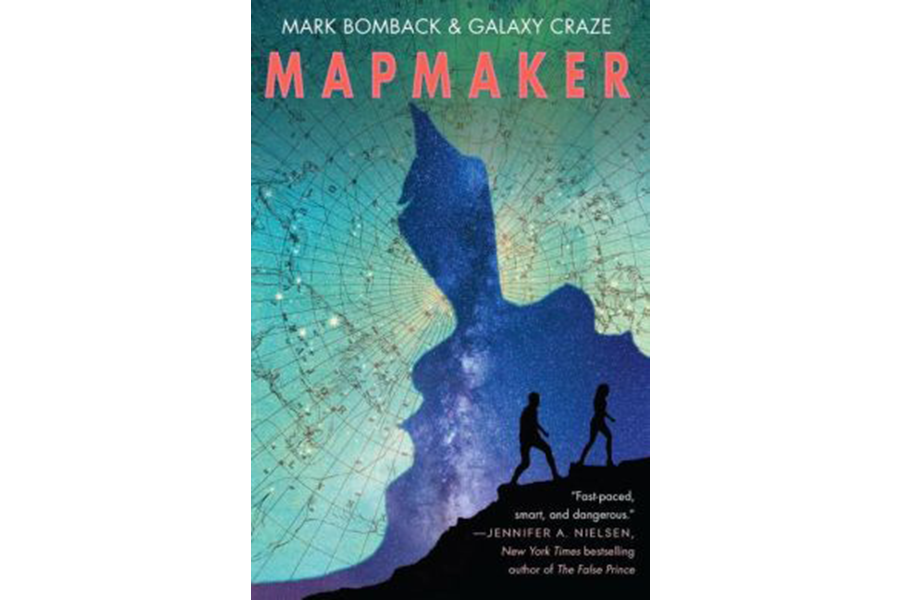'Mapmaker' pits a young intern against time and technology
Loading...
Mapmaker, mapmaker, trace me a map; find me a mine, catch me a cache.... Wait, that can’t be right. Where was I?
Where, indeed! That’s a key question in Mapmaker, a young adult adventure from screenwriter Mark Bomback and writer/actress Galaxy Craze. With their clever and resourceful heroine, they fuse Mia Thermopolis with Jason Bourne, and the combination sires someone truly edgy.
In this taut and techy tale, Tanya Barrett finds herself up against powerful enemies, battling time and technology to uncover the truth about her father and herself.
It looks like Tanya has more than paperwork to process at her summer internship at MapOut, a digital mapping company based in Amherst, Mass. Let’s map out (see what I did there?) the challenges:
1: The company was founded by her late father, cartographer Michael Barrett, who was killed a year ago on an expedition in Cambodia. The company HQ reeks of memories both sweet and tragic for Tanya. How can she clock in each day like it’s any old job?
2: Her childhood best friend (and son of the new MapOut CEO), Connor, is a fellow intern. Their friendship ruptured three years ago and they’re both nursing wounds from the break. Will they heal as friends … and maybe more?
3: It seems to be an unusual internship. On her first day, Tanya mindlessly enters data with the rest of the “collegiate sweatshop brain trust.” By day two, she’s under surveillance and fleeing gunfire and injections, and Connor has vanished. What’s really going on at MapOut?
Perhaps it has something to do with abilities that Tanya has long concealed. For starters, she’s a geospatial synaesthete. Her inner compass translates into colors: south is orange, north is green, west is pale blue, and east is purple.
She describes it: “My father thought I had a natural talent, a ‘gift’ he called it, which embarrassed me, like I was in one of the movies where kids see dead people or predict the future or whatever. It was part knack for gauging distances, part photographic memory of geospatial imagery.”
“The feeling and certainty I had about direction and distances couldn’t be summed up with words.... It was all a map in my head, an invisible feline tug.”
What’s more, that sense of distance and direction is strikingly accurate. She can visually measure distances down to the inch, mentally zooming out until she’s a pinprick on a perfect map with easy, clear direction.
Her gifts have glorious possibilities, if used the right way. Small wonder, then, that a digital mapping giant with the slogan “Put Yourself on the Map” finds her very, very interesting. Soon she’s on the run.
Pause to consider the ensuing irony. Because her pursuers have appallingly sophisticated surveillance technology, Tanya spends much of the book “off the grid” – no internet access, cell phones, or credit cards. She even (gasp!) uses a physical phonebook. It’s a fun and unexpected dichotomy, given the techy-tech premise and modern-day setting.
The questions that so often underline young adult novels – who am I? where am I in my life? how am I changing, and is that good or bad? – become quite literal for Tanya as the story progresses. She must face her fears and losses, and dig deep for the courage to move forward.
Craze and Bomback (a band name if ever I heard one) present a united voice that leaves me breathless. They write in short, concentrated bursts, like a teenspeak submachine gun or a Silicon Valley-ified Hemingway. Burst after stuttering burst crackles with wiry, tensile imagery, filling the pages with a constant “budda-budda-budda-budda” of development.
Mercifully, they keep the complex storyline tight, eschewing legions of named-but-disposable minor characters for a slick, just-the-essentials cast.
Their pointed imagery also pairs neatly with the wildly stunning book jacket. If you’re that storied individual who judges books by their covers, judge away (and expect to buy it).
When I realized that “Mapmaker” is intended as book one of a series, it was easy to forgive the few assumptive leaps in the final chapters. Plus, the cliffhanger ending was so preposterously evil that I ran to Google the sequel details. Nothing yet….
Fair warning: after finishing “Mapmaker,” you might find yourself looking over your shoulder or leaving that smartphone at home for a few days. “Put Yourself on the Map” – and watch out.








